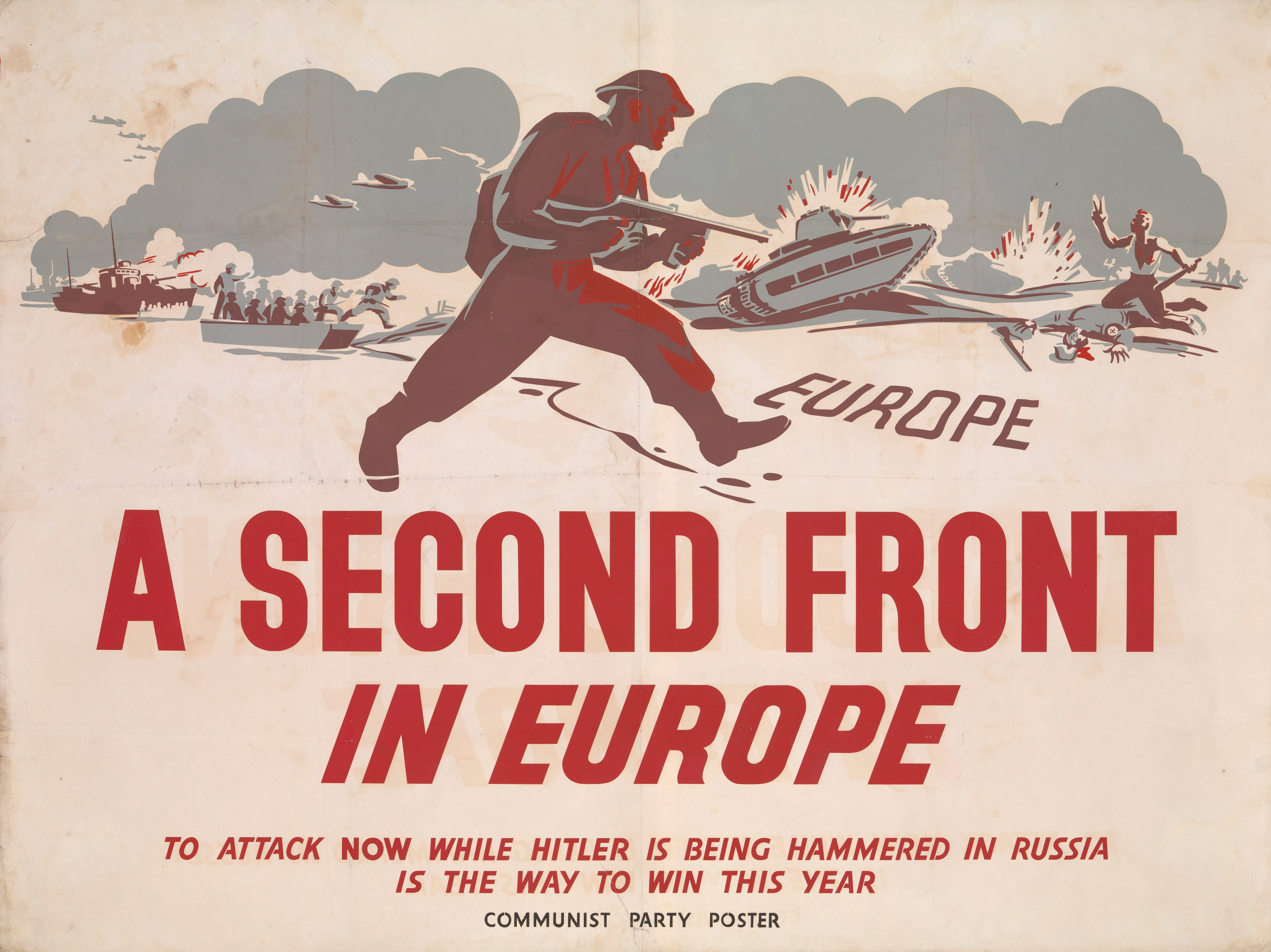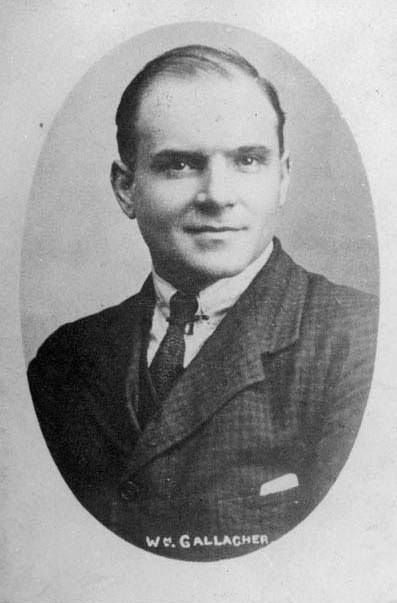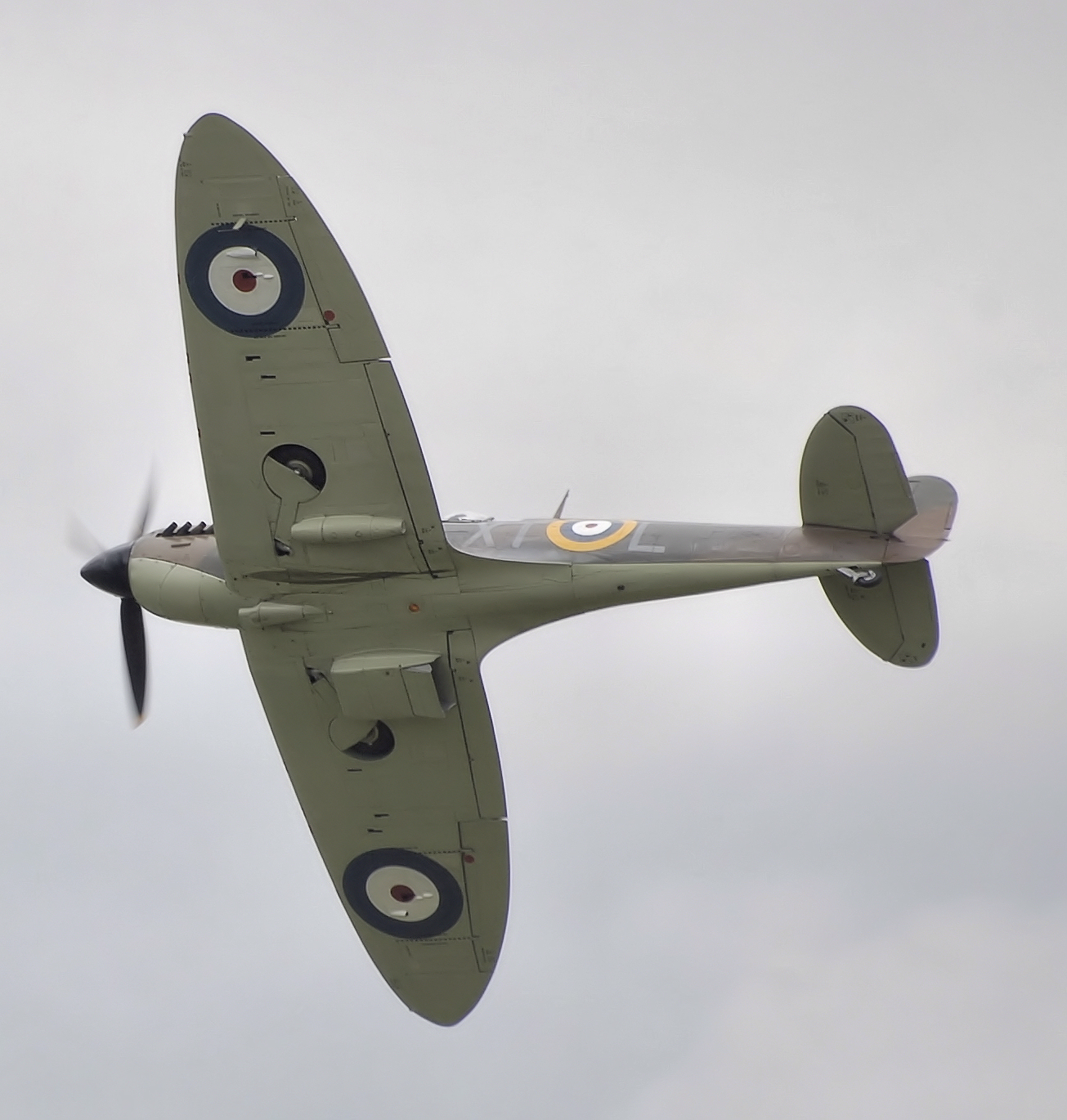|
1943 Rolls-Royce Strike
The 1943 Rolls-Royce strike was a strike action called after Rolls-Royce failed to implement a 1940 agreement on equal pay for female workers at its Hillington plant in Scotland. This plant produced the Rolls-Royce Merlin V-12 engine, used by British fighter and bomber aircraft in the Second World War. The strike, led by Agnes McLean, lasted for around a month before Rolls-Royce agreed to implement equal pay for equal work. It was the only major strike over women's pay during the war. Background The Rolls-Royce factory at Hillington, near Glasgow, Scotland, was built just before the start of the Second World War in 1939 as part of the British shadow factories scheme to disperse and increase British aircraft production. It produced the Rolls-Royce Merlin V-12 engine, used by the Hawker Hurricane and Supermarine Spitfire fighter aircraft. With men required on the frontlines the Extended Employment Agreement was signed by management in 1940 which permitted women to b ... [...More Info...] [...Related Items...] OR: [Wikipedia] [Google] [Baidu] |
Strike Action
Strike action, also called labor strike, labour strike, or simply strike, is a work stoppage caused by the mass refusal of employees to Labor (economics), work. A strike usually takes place in response to grievance (labour), employee grievances. Strikes became common during the Industrial Revolution, when Labour economics, mass labor became important in factories and mines. As striking became a more common practice, governments were often pushed to act (either by private business or by union workers). When government intervention occurred, it was rarely neutral or amicable. Early strikes were often deemed unlawful conspiracies or anti-competitive cartel action and many were subject to massive legal repression by state police, federal military power, and federal courts. Many Western nations legalized striking under certain conditions in the late 19th and early 20th centuries. Strikes are sometimes used to pressure governments to change policies. Occasionally, strikes destabilize ... [...More Info...] [...Related Items...] OR: [Wikipedia] [Google] [Baidu] |
Amalgamated Engineering Union
The Amalgamated Engineering Union (AEU) was a major United Kingdom, British trade union. It merged with the Electrical, Electronic, Telecommunications and Plumbing Union to form the Amalgamated Engineering and Electrical Union in 1992. History The history of the union can be traced back to the formation of the Journeymen Steam Engine, Machine Makers' and Millwrights' Friendly Society, in 1826, popularly known as the "Old Mechanics". They invited a large number of other unions to become part of what became the Amalgamated Society of Engineers (UK), Amalgamated Society of Engineers (ASE).Arthur Marsh and Victoria Ryan, ''Historical Directory of British Trade Unions'', vol.3, pp.12-16 In 1920, the ASE put out a fresh call for other unions to merge with it in a renamed Amalgamated Engineering Union (AEU). Seventeen unions balloted their members on a possible merger, and nine voted in favour of amalgamation: * Amalgamated Association of Brass Turners, Fitters, Finishers and Coppersm ... [...More Info...] [...Related Items...] OR: [Wikipedia] [Google] [Baidu] |
1943 Labor Disputes And Strikes
Events Below, the events of World War II have the "WWII" prefix. January * January 1 – WWII: The Soviet Union announces that 22 German divisions have been encircled at Stalingrad, with 175,000 killed and 137,650 captured. * January 4 – WWII: Greek-Polish athlete and saboteur Jerzy Iwanow-Szajnowicz is executed by the Germans at Kaisariani. * January 11 ** The United States and United Kingdom revise previously unequal treaty relationships with the Republic of China (1912–1949), Republic of China. ** Italian-American anarchist Carlo Tresca is assassinated in New York City. * January 13 – Anti-Nazi protests in Sofia result in 200 arrests and 36 executions. * January 14 – January 24, 24 – WWII: Casablanca Conference: Franklin D. Roosevelt, President of the United States; Winston Churchill, Prime Minister of the United Kingdom; and Generals Charles de Gaulle and Henri Giraud of the Free French forces meet secretly at the Anfa Hotel in Casablanca, Morocco, to plan the ... [...More Info...] [...Related Items...] OR: [Wikipedia] [Google] [Baidu] |
1943 In The United Kingdom
Events from the year 1943 in the United Kingdom. The year was dominated by the Second World War. Incumbents * Monarch – George VI * Prime Minister – Winston Churchill (Coalition) * Parliament – 37th Events * 1 January ** Total ban on civilians travelling to the Isle of Wight (continues until 25 August 1944). ** Utility furniture first becomes available. * 14 January – to counter a "serious increase" in U-boat operations the Royal Air Force switches its bombing campaign from industrial targets to U-boat bases in France attacking Lorient and Cherbourg-Octeville. * 17 January – anti-aircraft shrapnel shells kill 23 people and injure 60 during a raid on London by 118 planes; six are reported losses. * 20 January – Sandhurst Road School Disaster: a bomb kills 38 children and 6 teachers at a school in Catford, south-east London. * 23 January – World War II: British forces capture Tripoli from the Nazis. * 11 February – in the Midlothian and Peebles Northern by-elec ... [...More Info...] [...Related Items...] OR: [Wikipedia] [Google] [Baidu] |
Communist Party Of Great Britain
The Communist Party of Great Britain (CPGB) was the largest communist organisation in Britain and was founded in 1920 through a merger of several smaller Marxist groups. Many miners joined the CPGB in the 1926 general strike. In 1930, the CPGB founded the ''Daily Worker'' (renamed the ''Morning Star'' in 1966). In 1936, members of the party were present at the Battle of Cable Street, helping organise resistance against the British Union of Fascists. In the Spanish Civil War the CPGB worked with the USSR to create the British Battalion of the International Brigades, which party activist Bill Alexander commanded. In World War II, the CPGB mirrored the Soviet position, opposing or supporting the war in line with the involvement of the USSR. By the end of World War II, CPGB membership had nearly tripled and the party reached the height of its popularity. Many key CPGB members became leaders of Britain's trade union movement, including most notably Jessie Eden, Abraham Lazarus ... [...More Info...] [...Related Items...] OR: [Wikipedia] [Google] [Baidu] |
Red Clydeside
Red Clydeside was the era of political radicalism in Glasgow, Scotland, and areas around the city, on the banks of the River Clyde, such as Clydebank, Greenock, Dumbarton and Paisley, from the 1910s until the early 1930s. Red Clydeside is a significant part of the history of the labour movement in Britain as a whole, and Scotland in particular. Some newspapers of the time used the term "Red Clydeside" to refer, largely derisively, to the groundswell of popular and political radicalism that had erupted in Scotland. A confluence of charismatic individuals, organised movements and socio-political forces led to Red Clydeside, which had its roots in working-class opposition to Britain's participation in the First World War, although the area had a long history of political radicalism going back to the Society of the Friends of the People and the "Radical War" of 1820. 1911 strike at Singer The 11,000 workers at the largest Singer sewing machines factory, in Clydebank, went on str ... [...More Info...] [...Related Items...] OR: [Wikipedia] [Google] [Baidu] |
Transport And General Workers' Union
The Transport and General Workers' Union (TGWU or T&G) was one of the largest general trade unions in the United Kingdom and Ireland – where it was known as the Amalgamated Transport and General Workers' Union (ATGWU) to differentiate itself from the Irish Transport and General Workers' Union – with 900,000 members (and was once the largest trade union in the world). It was founded in 1922 and Ernest Bevin served as its first general secretary. In 2007, it merged with Amicus to form Unite the Union. History At the time of its creation in 1922, the TGWU was the largest and most ambitious amalgamation brought about within trade unionism. Its structure combined regional organisation, based on Districts and Areas, with committee organisation by occupation, based on six broad Trade Groups. Trade groups were not closely linked to trades, but were elected by activists. Officials of the union were grouped by region, and could be asked to serve each or any trade group. Docks ... [...More Info...] [...Related Items...] OR: [Wikipedia] [Google] [Baidu] |
Equal Pay For Equal Work
Equal pay for equal work is the concept of labour rights that individuals in the same workplace be given equal pay. It is most commonly used in the context of sexual discrimination, in relation to the gender pay gap. Equal pay relates to the full range of payments and benefits, including basic pay, non-salary payments, bonuses and allowances. Some countries have moved faster than others in addressing equal pay. Early history As wage-labour became increasingly formalized during the Industrial Revolution, women were often paid less than their male counterparts for the same labour, whether for the explicit reason that they were women or under another pretext. The principle of equal pay for equal work arose at the same part of first-wave feminism, with early efforts for equal pay being associated with nineteenth-century Trade Union activism in industrialized countries: for example, a series of strikes by unionized women in the UK in the 1830s. Pressure from Trade Unions has had vari ... [...More Info...] [...Related Items...] OR: [Wikipedia] [Google] [Baidu] |
Supermarine Spitfire
The Supermarine Spitfire is a British single-seat fighter aircraft used by the Royal Air Force and other Allied countries before, during, and after World War II. Many variants of the Spitfire were built, from the Mk 1 to the Rolls-Royce Griffon engined Mk 24 using several wing configurations and guns. It was the only British fighter produced continuously throughout the war. The Spitfire remains popular among enthusiasts; around 70 remain airworthy, and many more are static exhibits in aviation museums throughout the world. The Spitfire was designed as a short-range, high-performance interceptor aircraft by R. J. Mitchell, chief designer at Supermarine Aviation Works, which operated as a subsidiary of Vickers-Armstrong from 1928. Mitchell developed the Spitfire's distinctive elliptical wing with innovative sunken rivets (designed by Beverley Shenstone) to have the thinnest possible cross-section, achieving a potential top speed greater than that of several contemporary figh ... [...More Info...] [...Related Items...] OR: [Wikipedia] [Google] [Baidu] |
Rolls-Royce Limited
Rolls-Royce was a British luxury car and later an aero-engine manufacturing business established in 1904 in Manchester by the partnership of Charles Rolls and Henry Royce. Building on Royce's good reputation established with his cranes, they quickly developed a reputation for superior engineering by manufacturing the "best car in the world". The business was incorporated as Rolls-Royce Limited in 1906, and a new factory in Derby was opened in 1908. The First World War brought the company into manufacturing aero-engines. Joint development of jet engines began in 1940, and they entered production. Rolls-Royce has built an enduring reputation for development and manufacture of engines for defence and civil aircraft. In the late 1960s, Rolls-Royce was adversely affected by the mismanaged development of its advanced RB211 jet engine and consequent cost over-runs, though it ultimately proved a great success. In 1971, the owners were obliged to liquidate their business. The useful p ... [...More Info...] [...Related Items...] OR: [Wikipedia] [Google] [Baidu] |
Hawker Hurricane
The Hawker Hurricane is a British single-seat fighter aircraft of the 1930s–40s which was designed and predominantly built by Hawker Aircraft Ltd. for service with the Royal Air Force (RAF). It was overshadowed in the public consciousness by the Supermarine Spitfire during the Battle of Britain in 1940, but the Hurricane inflicted 60 percent of the losses sustained by the Luftwaffe in the campaign, and fought in all the major theatres of the Second World War. The Hurricane originated from discussions between RAF officials and aircraft designer Sir Sydney Camm about a proposed monoplane derivative of the Hawker Fury biplane in the early 1930s. Despite an institutional preference for biplanes and lack of interest by the Air Ministry, Hawker refined their monoplane proposal, incorporating several innovations which became critical to wartime fighter aircraft, including retractable landing gear and the more powerful Rolls-Royce Merlin engine. The Air Ministry ordered Hawker's ''Int ... [...More Info...] [...Related Items...] OR: [Wikipedia] [Google] [Baidu] |
British Shadow Factories
British shadow factories were the outcome of the Shadow Scheme, a plan devised in 1935 and developed by the British Government in the buildup to World War II to try to meet the urgent need for more aircraft using technology transfer from the motor industry to implement additional manufacturing capacity. The term 'shadow' was not intended to mean secrecy, but rather the protected environment they would receive by being staffed by all levels of skilled motor industry people alongside (in the shadow of) their own similar motor industry operations. A directorate of Aeronautical Production was formed in March 1936 with responsibility for the manufacture of airframes as well as engines, associated equipment and armaments. The project was headed by Herbert Austin and developed by the Air Ministry under the internal project name of the Shadow Scheme. Sir Kingsley Wood took responsibility for the scheme in May 1938, on his appointment as Secretary of State for Air in place of Lord Swi ... [...More Info...] [...Related Items...] OR: [Wikipedia] [Google] [Baidu] |







.jpg)

